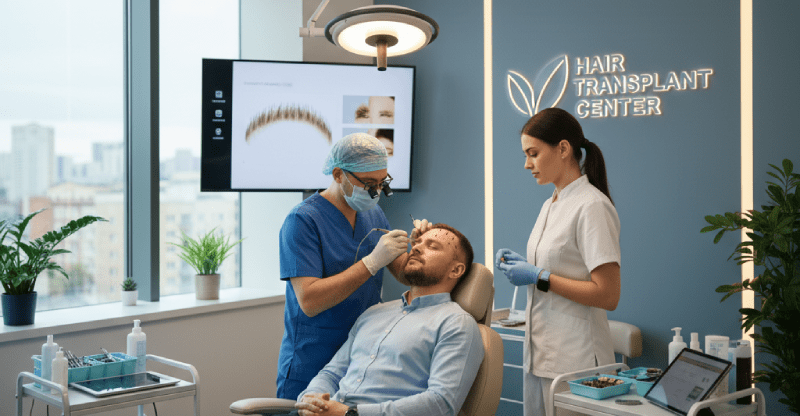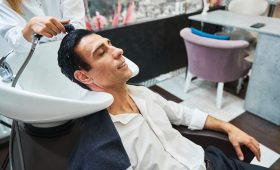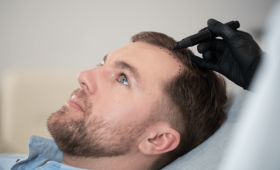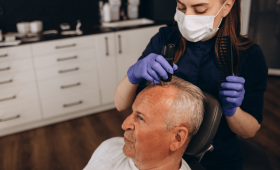Hair Transplantation and the Age Factor
Hair transplantation has become one of the most popular aesthetic surgery procedures. However, one of the most important factors to consider when making this decision is age. The process of hair loss and hair transplantation varies depending on the person’s age. The results of a procedure performed at a young age may differ from those of a procedure performed in middle age. In this article, we will examine in detail how hair transplantation should be approached in different age groups and why Turkey is the most ideal destination for this journey. This information aims to help anyone considering a hair transplant make the most informed decision.
The 20s: Realistic Expectations
The 20s are generally the period when hair loss begins and progresses most rapidly. Individuals in this age group may want to replace their lost hair immediately. However, a hair transplant operation performed during this period can carry risks because the future pattern of hair loss is not yet fully clear. While the transplanted hair is permanent, the existing hair around it may continue to fall out, which can lead to an unnatural appearance in the future. Therefore, it is critically important for those considering a hair transplant in their 20s to take these potential risks and future needs (such as a second operation) into account. A comprehensive consultation with a specialist doctor is the most correct step to take in this process.
Continued Hair Loss and Planning
Hair loss is a progressive process, usually due to genetic factors. Especially male pattern hair loss can continue into the 40s and 50s. The success of a hair transplant operation is measured not only by the survival of the transplanted hair but also by the preservation of the existing hair after the procedure. Continued hair loss may mean that the grafts taken from the donor area will not be able to meet future needs. Therefore, when making a hair transplant decision, it is expected that the hair loss pattern has stabilized. Experts recommend waiting for a period of at least one to two years during which hair loss has stopped or slowed down. This guarantees the long-term success of the operation.
The 30s: Generally the Ideal Period
Most hair transplant specialists consider the 30s to be the most suitable period for a hair transplant. In this age group, hair loss generally slows down to some extent, and the future hair loss pattern becomes more predictable. This allows the doctor to plan the operation more accurately. In individuals in their 30s, the hair follicles in the donor area are generally stronger and healthier. This means a higher quality of grafts and a better survival rate. Additionally, this age group combines the energy of youth with the realistic expectations that come with maturity, which increases post-operative satisfaction.
Stabilization of Hair Loss
The stabilization of hair loss is perhaps an even more important criterion for a hair transplant operation than age itself. The term “stabilization” refers to the period when the rate of hair loss has decreased and the recession line has become clearly established. An operation performed while hair loss is still progressing can lead to an aesthetic disaster as the hair around the transplanted area continues to fall out. Gaps form between the transplanted hairs, and this results in an unnatural, “patchy” appearance. Therefore, the condition of the donor and recipient areas plays a key role in operation planning.
The 40s and Beyond: Advantages and Disadvantages
Having a hair transplant in your 40s and beyond has its own unique advantages and disadvantages. In these ages, hair loss has generally largely completed, which reduces the need to worry about future loss. Doctors can plan the transplant more precisely. The disadvantage is that the quality and density of the hair in the donor area may decrease with age. Additionally, the recovery process may be slightly longer than in younger ages. However, for individuals over 40 with good general health, sufficient donor area density, and realistic expectations, a hair transplant can yield very successful results.

The Condition of the Donor Area: Age-Related Changes
The donor area is the key to a hair transplant. The quality of this area (usually the back of the neck and behind the ears), from which healthy hair follicles are taken for the operation, can change with age. As age progresses, the density and thickness of hair follicles in the donor area may decrease. This directly affects the number of grafts that can be taken in a single operation. Therefore, it is essential for individuals considering a hair transplant at an older age to have a detailed evaluation of their donor area and to consult with a specialist doctor. An experienced surgeon can determine the most suitable techniques to get the maximum yield from the donor area and achieve the best aesthetic result.
Health Status and Chronic Illnesses
As age progresses, the incidence of chronic diseases in individuals increases. Conditions such as diabetes, high blood pressure, and heart disease can increase the risks of a hair transplant operation. Since a hair transplant is a surgical procedure, the patient’s general health status directly affects the success of the operation and the recovery process. Therefore, patients considering a hair transplant at an older age must undergo a detailed health check before the operation and report all existing health problems to their doctors completely. For a healthy individual, age alone is not a barrier.
Psychological Maturity and the Decision-Making Process
A hair transplant is not only a physical change but also a significant psychological transformation. The results of the operation are permanent, and therefore it is important for the person to make this decision with full maturity. While decisions in younger ages may be based more on immediate emotions and aesthetic concerns, decisions made at an older age are generally based on more conscious and realistic expectations. Being psychologically ready for the operation ensures that the person is more satisfied with the results. Therefore, regardless of age, it is recommended that the decision-making process is not rushed and all aspects are carefully considered.
Hair Transplantation in Turkey: A Global Hub
Turkey has become a global “brand” in the field of hair transplantation. The most important reasons behind this are the high standards of health services, technological infrastructure, expert surgeons, and the competitive prices offered. Hair transplant clinics in Turkey achieve natural and permanent results using the latest technologies such as FUE (Follicular Unit Extraction) and DHI (Direct Hair Implantation). Istanbul, in particular, stands out as a global center in this field. Foreign patients prefer Turkey not only for hair transplants but also for the balance of quality service and affordable prices.
Hair Transplant Prices and Quality Balance in Turkey
The cost of a hair transplant is an important factor for many people. Turkey offers hair transplant operations at much more affordable prices compared to Europe and North America. However, these affordable prices do not mean that quality is compromised. On the contrary, clinics in Turkey can invest in the latest technology and expert staff thanks to the high volume of patients. This keeps the price-quality balance at an optimal level. Even when travel and accommodation costs are added, patients coming from abroad can undergo a top-level operation with a smaller budget than they would pay in their own countries.
Expert Doctors and Clinics in Turkey
The success of hair transplantation in Turkey is based on the expert and experienced surgeons in this field. Turkish doctors have received training at international standards and have performed thousands of successful operations. Hair transplantation is not only a surgical procedure but also requires an artistic talent. Turkish doctors are specialized in designing the hairline and achieving a natural look. Many clinics offer detailed pre- and post-operative consultation services to their patients, exhibiting personalized approaches to determine the most suitable plan.
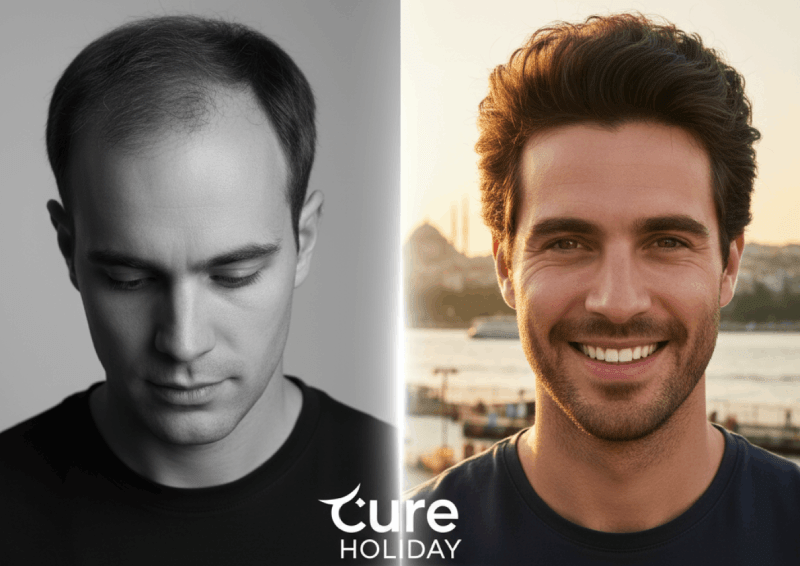
Ease of Travel and Accommodation in Turkey
Turkey is a country that can be easily reached from all over the world thanks to its geographical location and developed transportation network. Many major cities play a central role for international flights. Patients coming for hair transplant tourism usually stay for a few days for the operation and recovery process. Many clinics offer package services for their patients, such as accommodation, transfers, and even city tours, making the process much more comfortable. These conveniences allow patients to focus on their treatment and minimize stress.
Legal Regulations and Patient Safety
The Ministry of Health of the Republic of Turkey applies high standards of legal regulations in fields such as aesthetic surgery and hair transplantation. It is mandatory for hair transplant operations to be performed only in licensed and authorized clinics by specialized surgeons. These regulations aim to ensure the safety of patients and guarantee the quality of service. It is important for those considering a hair transplant to ensure that the clinic they choose meets these legal requirements. Turkey offers a transparent and reliable medical tourism environment.
Is There an Age Limit for Hair Transplantation?
There is no definitive upper age limit for a hair transplant. What is important is the person’s general health status and the quality of the hair in the donor area. An older patient over 70 with good general health and a sufficient donor area may be a better candidate than a patient in their 20s whose hair loss has not yet stabilized. However, the lower age limit is usually around 20-22 years, as the hair loss pattern cannot be fully understood before this age. This lower limit is critical to ensure the long-term success of the hair transplant and the patient’s satisfaction.
Success Rate in Older Patients
Older patients should expect different results from a hair transplant operation compared to younger patients. The hair in the donor areas of these patients may be thinner, and the recovery process may progress a little slower. However, the fact that hair loss has largely been completed makes the operation more predictable. With proper planning and good management of patient expectations, very satisfactory and natural results can also be achieved in older patients. The important thing is for the patient to fully understand the potential and limitations of the operation.
A Second Session After Hair Transplantation at a Young Age
Patients who have had a hair transplant at a young age are highly likely to need a second operation later in life. This is because even if the hair transplanted in the first operation is permanent, the existing hair around it continues to fall out. This can lead to unnatural gaps in hair density and the hairline. A second session is planned to fill these gaps and make the hair transplant more harmonious. Therefore, it is important for young patients to understand that the first operation is not a “result” but part of an ongoing process.
Donor Area Management According to Age Groups
The donor area is a limited resource in hair transplantation. The management of the donor area according to age determines the long-term success of the operation. In young patients, a more conservative approach is taken, considering potential future needs. In older ages, the goal is to use the grafts in the donor area with maximum efficiency. An experienced surgeon, based on the patient’s age and hair loss pattern, manages the donor area in the best way possible, ensuring that hair follicles are preserved for possible future operations.
Non-Age Related Factors: The Number of Grafts
The factors affecting the success of a hair transplant are not only age-related. Factors such as the number of grafts to be transplanted, hair type, hair thickness, and the extent of hair loss also directly affect the results. The number of grafts that can be taken from the donor area varies according to the patient’s natural hair density and the size of the donor area. Therefore, it is essential to evaluate these other factors in detail, in addition to age, when making a hair transplant decision. Every patient is unique, and the operation plan should be prepared individually.
Consultation and Preliminary Examination in Hair Transplantation
The hair transplant process begins with a comprehensive consultation and preliminary examination. At this stage, a specialist doctor evaluates the patient’s hair loss history, general health status, the quality of the donor area, and their expectations. Age is an important part of this evaluation. The doctor determines the most suitable transplant technique, the number of grafts, and the operation plan according to the patient’s age and condition. This preliminary consultation both ensures that the patient receives correct information and increases the success of the operation.
Natural Appearance and Age Harmony
A successful hair transplant operation is not limited to filling in bald areas; it also aims to achieve a natural and aesthetic result. The hair transplant should be compatible with the patient’s age. For example, if a young person is given the hairline of a 40-year-old, or a 40-year-old is given the hairline of a 20-year-old, an artificial appearance can result. An expert surgeon designs the most natural-looking hairline by considering factors such as the patient’s age, facial structure, and future hair loss tendencies.
Patient Stories and Case Studies
When making a hair transplant decision, it can be helpful to examine the experiences of people with similar age and hair loss patterns. Most clinics share “before and after” photos on their websites or social media accounts. These visuals can help you get a realistic idea of the potential results of the operation. However, it is important to remember that every case is different. Someone else’s success does not guarantee the same result for you. Therefore, you should evaluate your own situation by having a one-on-one consultation with a specialist doctor.
Conclusion: A Personal Decision and Professional Support
There is no single answer to the question of the best age for a hair transplant. This decision is shaped by a combination of many factors, such as the person’s individual hair loss pattern, general health status, the quality of the donor area, and psychological expectations. Successful operations are possible in both the 20s and the 50s. The important thing is not to rush this decision, to evaluate all factors, and to choose an experienced clinic and a specialist doctor who provides services at international standards to guide you through this process.
Why Turkey? Factors Influencing Your Decision
Why is Turkey such a popular destination for hair transplants? The answer is simple: a combination of quality, experience, price, and comfort. The cost of a hair transplant operation is an important factor for many patients. Turkey offers these operations at high quality but at affordable prices, providing an economic solution for patients coming from abroad. Expert surgeons, modern techniques, and patient-oriented services make Turkey an ideal starting point for your hair transplant journey. A hair transplant operation in Turkey means not only gaining new hair but also having a safe, comfortable, and high-quality experience. Therefore, if you are considering a hair transplant, you should definitely evaluate the options in Turkey.
